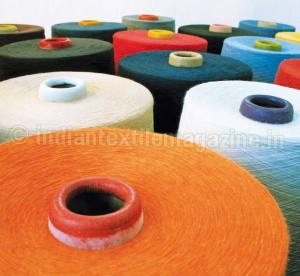
Aditya Birla Yarn has enhanced the perceived value of its product by adding value and creating branded yarn that has transformed the product into a much-sought-after corporate brand.
With five manufacturing units in three countries, Aditya Birla Yarn accounts for about 13 per cent of the global synthetic yarn market. In an attempt to counter global volatility in consumer demand and falling prices, Aditya Birla Yarn reinvented its product and transformed it into branded yarn.
“Aditya Birla Yarn, the overseas spinning business of the Aditya Birla Group, comprises three manufacturing units in Indonesia and one each in Thailand and the Philippines. With 45 years of experience in the spinning industry, its products are present in every major textile and garment manufacturing market in the world.
Creating value
The business, which produces viscose filament yarn (VFY) and other yarns, was facing pressure from multiple areas – widespread volatility in global consumer demand, increasing competition from low-cost, unorganised producers in Vietnam, Indonesia, China and India, volatility of raw material prices, increasing labour and power costs and trade barriers.
The leadership team realised that the need of the hour was to create unique, differentiated value-added products for high-end applications. The business decided to embark on a bold step – moving towards value-added products. Taking cues from other such ventures (salt, milk, water, etc., are all examples of commodities which are now branded), the company explored ways in which to enhance the perceived value of its product by its customers. A strategic marketing campaign was launched to increase margins and create visibility for Aditya Birla Yarn across the value chain.
Once the strategy was in place, value-added products for all five units were established. The organisation had to overcome a big challenge – changing the organisational environment from a commodity orientation to being a manufacturer of branded yarn. A multi-pronged strategy was hence devised.
Product development for immediate market needs: The group introduced existing market products such as bamboo, wool, linen blends viscose and modal, under the Aditya Birla Yarn (ABY) brand name.
Building value around the commodity: It developed differentiated products by adding value to its yarn. These Aditya Birla Yarn products combined product consistency and quality and were branded according to their characteristics.
Tie-ups with branded fibres: The company team collaborated with other branded fibre manufacturers to create unique fabrics and brands.

New product development
The organisation adopted a three-step strategy for creation of these value-added products:
Exploring existing potential: Existing fibres from the market were identified for potential and taken through the whole gamut of product development, testing, perfection and market seeding for commercialisation.
Partnering with branded fibres: Potential branded fibres were identified and through collaboration with the manufacturer, a joint know-how on seeding, development and commercialisation was achieved.
Differentiated product development: A systematic approach that involved ideation, incubation, prototype creation and test marketing before the actual commercialisation process.
From 2010-12, the Aditya Birla Yarn team introduced as many as 16 new products. It also signed agreements with branded fabrics to use the Aditya Birla Yarn logos on the collateral, much like Intel Inside.
Product branding strategy
After successful creation of differentiated, value-added products, the company devised a branding strategy that would combine the strengths of the company with the products’ USP to unlock value. The strategy would unlock values at multiple points of the value chain in the short term and also help encash the perceived value by the consumer in the long term. The strategy aimed at beating competition by creating product differentiation that is difficult to imitate, with a distinct identity as opposed to a commodity.
After a comprehensive internal marketing study, the team decided to create sub-brands around the mother brand, which was the name of the company. Thus were born ABY Flexo, ABY Softura, ABY Style, ABY Colorlast, and so on. The product branding strategy was to create each product with clear trade and consumer benefits. With consumer-friendly names, simple and clear fonts and mnemonics, each product had its own unique colour representing its USP. Thus ABY Flexo used blue to indicate denim, ABY Softure used pink to indicate softness, and so on.
With the new product and product branding in place, the team then turned its focus on the market strategy. It participated in trade fairs and customer meets to create awareness and created a one-of-its-kind marketing kit to connect with customers. The marketing kit included fabric swatches, product bulletins, ABY branded products, test reports and customer stories, all designed to create awareness, connect and enhance the perceived value of the product.
The strategy has worked successfully well. Today value-added products are not just extremely popular, they also account for 1,200 metric tonnes with revenues of $4.8 million. But what ABY has done is something no other spinner has ever accomplished – upgrading itself from a commodity seller to a thriving corporate brand.